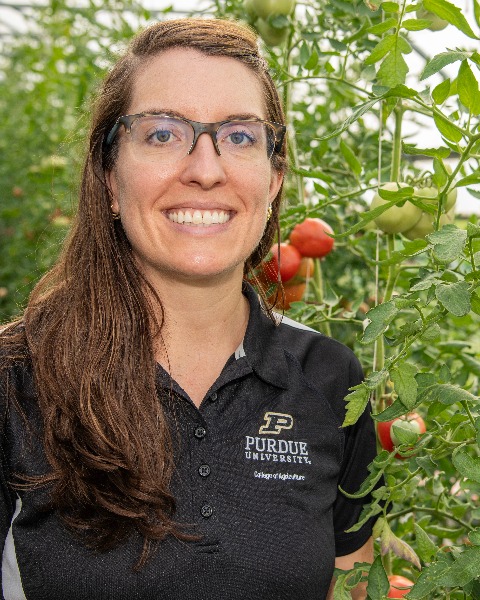Section Symposium
Plant-Insect Ecosystems
Formal and Informal Teaching
Empowering Tomorrow’s Food Systems with Controlled Environment Agriculture
Syrphid flies (Toxomerus marginatus) for aphid management in high tunnels: A comparative study with lacewings (Chrysoperla carnea)
Tuesday, November 12, 2024
10:40 AM - 10:55 AM MST
Location: Phoenix Convention Center, 126 C, PCC
- AZ
Allison Zablah
Purdue University
West Lafayette, Indiana 
Laura L. Ingwell (she/her/hers)
Assistant Professor
Purdue University
West Lafayette, Indiana
Presenting Author(s)
Co-Author(s)
Protected culture of food crops is increasing as a result of climate change and to facilitate production in temperate regions. High tunnels (HT) are a common tool that is utilized on a variety of farms. There are few insects that are well-adapted to these environments. One of the biggest challenges encountered is increased pest pressures, especially from soft-bodied pests such as aphids. At the same time, natural enemies are less common and augmented biocontrol agents often leave. Syrphid flies, however, are common in HTs and contribute as pollinators and predators in this ecosystem. This study investigates the efficacy of syrphid flies (Toxomerus marginatus) as biological control agents for aphids within high tunnels, comparing their performance to lacewings. We will compare the performance of T. marginatus with the commercially available lacewing C. carnea, a well-established predator of aphids, to evaluate their relative efficacy in managing aphid populations. Through field trials and laboratory bioassays we will quantify the impacts of these two predators on aphid population dynamics. Furthermore, we will report on the association of syrphid flies with various host plants (crop and noncrop) to explore strategies to enhance populations in HTs, as they are not commercially available in the US. This study will provide insight into the compatibility of conservation of syrphids and augmentation of lacewings in HT systems.

.png)
